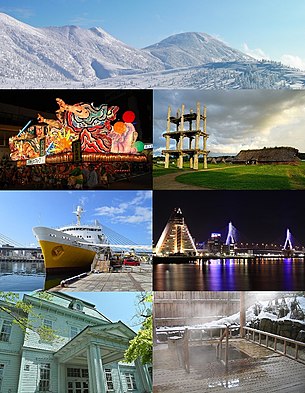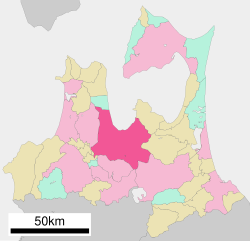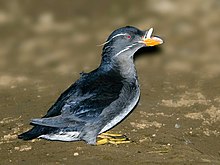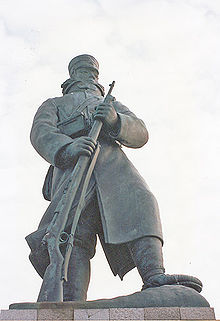Aomori
| |||||||||||||||||||||||||||||||||||||||||||||||||||||||||||||||||||||||||||||||||||||||||||||||||||||||||||||||||||||||||||||||||||||||||||||||||||||||||||||||||||||||||||||||||||||||||||||||||||||||||||||||||||||||||||||||||||||||||||||||||||||||||||||||||||||||||||||||||||||||||||||||||||||||||||||||||||||
Read other articles:

ロバート・デ・ニーロRobert De Niro 2011年のデ・ニーロ生年月日 (1943-08-17) 1943年8月17日(80歳)出生地 アメリカ合衆国・ニューヨーク州ニューヨーク市身長 177 cm職業 俳優、映画監督、映画プロデューサージャンル 映画、テレビドラマ活動期間 1963年 -配偶者 ダイアン・アボット(1976年 - 1988年)グレイス・ハイタワー(1997年 - )主な作品 『ミーン・ストリート』(1973年)『…

War between Great Britain and the Russian Empire Anglo-Russian War redirects here. For the Anglo-Russian war of 1853–1856, see Crimean War. The Anglo-Russian War of 1807–1812Part of the Napoleonic WarsBattle between the Russian ship Opyt and a British frigate, off the coast of Nargen Island, 11 July 1808Date2 September 1807 – 18 July 1812(4 years 10 months & 16 days)LocationBaltic SeaBarents SeaResult French invasion of Russia, coalition between Britain, Russia and Sweden against Franc…

Branch of philosophy that examines the essence and meaning of culture Part of a series onPhilosophy Philosophy portal Contents Outline Lists Glossary History Categories Disambiguation Philosophies By period Ancient Ancient Egyptian Ancient Greek Medieval Renaissance Modern Contemporary Analytic Continental By region African Egypt Ethiopia South Africa Eastern philosophy Chinese Indian Indonesia Japan Korea Vietnam Indigenous American Aztec philosophy Middle Eastern philosophy Iranian W…

Ken GhoshLahir19 Agustus 1966 (umur 57)MumbaiPekerjaanSutradara, Penulis Ken Ghosh adalah seorang sutradara dan penulis naskah Hindi India. Ia juga memproduksi film dan serial TV.[1] Ia adalah alumnus The Bishop's School. Filmografi Sutradara Tahun Film Produser Catatan 2003 Ishq Vishk Kumar S. Taurani Ramesh S. Taurani 2004 Fida Kumar S. Taurani Ramesh S. Taurani 2010 Chance Pe Dance Ronnie Screwvala 2018 XXX Referensi ^ Ken Ghosh di IMDb (dalam bahasa Inggris) Wikimedia Commons me…

Presencia de América Latina (1964-65), mural by Jorge González Camarena. Latin American art is the combined artistic expression of South America, Central America, the Caribbean, and Mexico, as well as Latin Americans living in other regions. The art has roots in the many different indigenous cultures that inhabited the Americas before European colonization in the 16th century. The indigenous cultures each developed sophisticated artistic disciplines, which were highly influenced by religious a…

This article is about the lunar rover from Chandrayaan 2. For the rover from Chandrayaan 3, see Pragyan (Chandrayaan-3). Indian lunar rover PragyanPragyan mounted on the ramp of Vikram landerMission typeLunar roverOperatorISROMission duration0 days (landing failure) Spacecraft propertiesManufacturerISROLanding mass27 kg (60 lb)Dimensions0.9 m × 0.75 m × 0.85 m (3.0 ft × 2.5 ft × 2.8 ft)Power50 W from solar panels Start of missionLau…
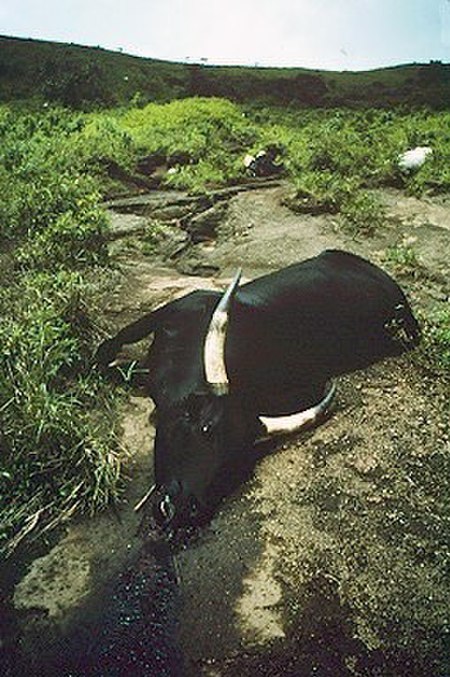
Pocket of carbon dioxide–rich air that can be lethal In geology, a mazuku (Swahili for evil wind) is a pocket of carbon dioxide-rich air that can be lethal to any human or animal life inside.[1] Mazuku is created when carbon dioxide accumulates in pockets low to the ground.[2] CO2 is denser than air, which causes it to flow downhill, hugging the ground like a low fog, and is also undetectable by human olfactory or visual senses in most conditions. Mazukus can be related to volc…

For the Sanskrit grammarian, see Kātyāyana. Leading disciple of Gautama Buddha MahākatyāyanaIllustration of MahākātyāyanaTitleSankhittēna bhāsitassa vitthārēna attha vibhajantānan (Pāli; lit. Foremost of those presenting the detailed meaning of what is spoken in brief)PersonalBornUjjain, AvantiReligionBuddhismParent(s)Tirītavaccha (father), Candapadumā (mother)[1]OccupationmonkSenior postingTeacherGautama Buddha Students (Pali)SoṇakuṭikaṇṇaIsidattaAvantiputtaLohicc…

この記事は検証可能な参考文献や出典が全く示されていないか、不十分です。出典を追加して記事の信頼性向上にご協力ください。(このテンプレートの使い方)出典検索?: コルク – ニュース · 書籍 · スカラー · CiNii · J-STAGE · NDL · dlib.jp · ジャパンサーチ · TWL(2017年4月) コルクを打ち抜いて作った瓶の栓 コルク(木栓、蘭&…

この記事は検証可能な参考文献や出典が全く示されていないか、不十分です。出典を追加して記事の信頼性向上にご協力ください。(このテンプレートの使い方)出典検索?: コルク – ニュース · 書籍 · スカラー · CiNii · J-STAGE · NDL · dlib.jp · ジャパンサーチ · TWL(2017年4月) コルクを打ち抜いて作った瓶の栓 コルク(木栓、蘭&…

Football stadium in Kerala, India Malappuram District Sports Complex Stadium, Payyanadമലപ്പുറം ജില്ലാസ്പോർട്സ് കോംപ്ലക്ല്, പയ്യനാട്MDSC Stadium, MalappuramPayyanad StadiumLocationPayyanad, Manjeri, Malappuram, KeralaOwnerGovernment of KeralaOperatorGovernment of KeralaCapacity29,188 (to be expanded to 44,500)[1]SurfaceGrassConstructionOpened2013Construction cost$12 millionTenantsKerala United FC (2021–pre…

This article includes a list of general references, but it lacks sufficient corresponding inline citations. Please help to improve this article by introducing more precise citations. (December 2021) (Learn how and when to remove this message) 1848-49 uprising in the Grand Duchy of Baden vteBattles during the Baden Revolution of 1848/49Hecker Uprising (13–27 April 1848): Scheideck Günterstal Freiburg Dossenbach Struve Putsch (21–25 September 1848): Staufen Baden Mutiny (9 May – 23 July 184…
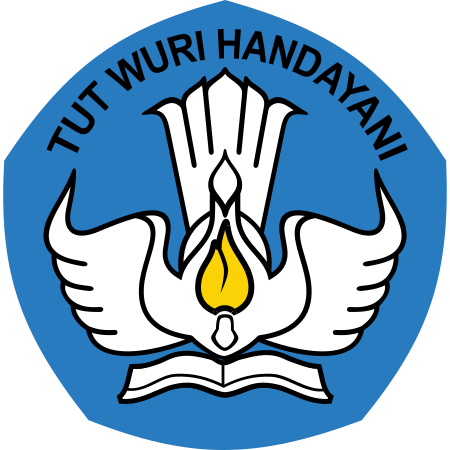
Artikel ini tidak memiliki referensi atau sumber tepercaya sehingga isinya tidak bisa dipastikan. Tolong bantu perbaiki artikel ini dengan menambahkan referensi yang layak. Tulisan tanpa sumber dapat dipertanyakan dan dihapus sewaktu-waktu.Cari sumber: Sekolah Tinggi Ilmu Ekonomi AUB – berita · surat kabar · buku · cendekiawan · JSTOR Sekolah Tinggi Ilmu Ekonomi AUBNama lainSTIE AUBMotoMuluk Kondang Kusumaning BawonoJenisPerguruan Tinggi SwastaDidirikan6 …
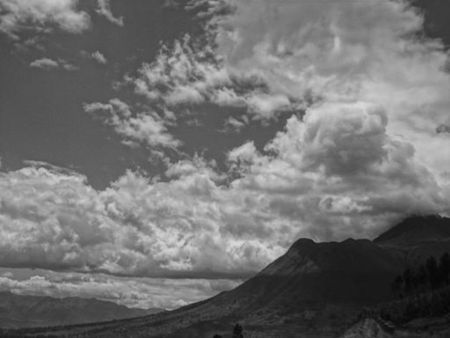
Province of Ecuador This article is about the Imbabura province. For the Imbabura volcano, see Imbabura Volcano. Province in EcuadorImbaburaProvinceProvince of ImbaburaMount Imbabura from south-east. FlagImbabura Province in EcuadorCantons of Imbabura ProvinceCountry EcuadorCapitalIbarraGovernment • Provincial PrefectRichard CalderónArea • Total4,785 km2 (1,847 sq mi)Population (2022 census)[1] • Total469,879 • Den…

Ethnic religion of the Samaritan people Samaritanismהַדָּת הַשּׁוֹמְרוֹנִיתالسامريةSamaritan mezuzah in the city of Nablus, 2013TypeEthnic religionScriptureSamaritan PentateuchTheologyMonotheisticHigh PriestAabed-El ben Asher ben MatzliachAssociationsJudaismLanguageSamaritan Hebrew and Samaritan AramaicTerritoryLand of IsraelFounderAbraham (traditional) Moses (traditional, lawgiver)Originc. 6th–3rd century BCE IsraelSeparated fromYahwismMembers~900 (Samarita…

Lake in California and Nevada, United States This article is about the United States lake. For the 2008 film, see Lake Tahoe (film). Tahoe redirects here. For other uses, see Tahoe (disambiguation). Lake TahoeDáʔaw (Washo)The south shore of Lake Tahoe in California, as seen from the west shoreLake TahoeLocation of Lake Tahoe in CaliforniaShow map of CaliforniaLake TahoeLocation of Lake Tahoe in NevadaShow map of NevadaLake TahoeLocation of Lake Tahoe in the USAShow map of the United State…

English archaeologist and politician (1817–1894) The Right HonourableSir Austen Henry LayardGCB PCUnder-Secretary of State for Foreign AffairsIn office12 February 1852 – 21 February 1852MonarchQueen VictoriaPrime MinisterLord John RussellPreceded byThe Lord Stanley of AlderleySucceeded byLord StanleyIn office15 August 1861 – 26 June 1866MonarchQueen VictoriaPrime MinisterThe Viscount PalmerstonThe Earl RussellPreceded byThe Lord WodehouseSucceeded byEdward EgertonFirs…

Tobacco cigar made in Cuba Tobacco plantation, Pinar del Río, Cuba Cuban cigars are cigars manufactured in Cuba from tobacco grown within that island nation. Historically regarded as among the world's “finest”, they are synonymous with the island's culture and contribute over one quarter of the value of all exports from the country. The filler, binder, and wrapper may come from different areas of the island, though much is produced in Pinar del Río province, in the regions of Vuelta Abajo …

SaprissaNama lengkapDeportivo Saprissa Sociedad Anónima DeportivaJulukanEl Monstruo Morado; Los Morados, La 'S'Berdiri16 Juli 1935StadionStadion Ricardo Saprissa Aymá San José, Kosta Rika(Kapasitas: 27.500)Ketua Jorge VergaraPelatih Kepala Roy MyersLigaDivisi Utama Kosta RikaVerano 2010Pemenang Kostum kandang Kostum tandang Kostum ketiga C.D. Saprissa merupakan sebuah klub sepak bola Kosta Rika. Klub ini bermarkas di San José, yang merupakan ibu kota Kosta Rika. Mereka memainkan pertandingan…

1891 Iowa gubernatorial election ← 1889 November 3, 1891 1893 → Nominee Horace Boies Herman C. Wheeler Party Democratic Republican Popular vote 207,594 199,381 Percentage 49.40% 47.45% Governor before election Horace Boies Democratic Elected Governor Horace Boies Democratic Elections in Iowa Federal government U.S. Presidential elections 1848 1852 1856 1860 1864 1868 1872 1876 1880 1884 1888 1892 1896 1900 1904 1908 1912 1916 1920 1924 1928 1932 1936 1940 1944 1…
